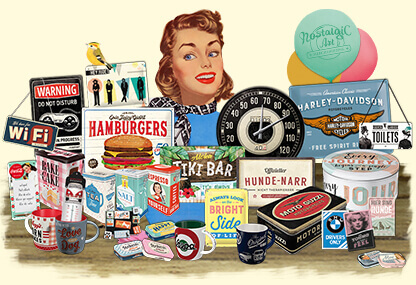
The use of art in advertising dates back to the beginning of modern marketing. From Andy Warhol’s campaigns for “Campbell Soup Cans” to Norman Rockwell’s ads for Jell-O and Orange Crush in the 1940s, the art of advertising has complemented and evolved.
Also, this way of promoting a product or service generates more and more engagement and connection between the consumer and the brand. In the end, art represents a way of creating a visual pattern in a promotional action. The brand stops being just a brand and becomes a recurring, familiar and remembered concept.
In this article, you will see how art and advertising complement each other and how advertising art can improve a company’s sales and create fans for a brand.
Ready? So let’s get down to business!
What do art and advertising campaigns have in common?
It is not new to think that advertising and art are similar things. After all, the two share the same goal – to share emotions, feelings, through some message.
Think about the last ads you saw, they probably aroused some feeling or emotion in you.
Now, think of a piece of art that you really like – a picture, a painting, or something like that. It also awakens you to some sensation, perhaps some very strong memory, correct?
That’s the connection between art and advertising: the ability to make people feel things and remember memorable moments in their lives.
But, we can think that these two areas have different goals.
Advertising campaigns typically want to make the sensations of their ads drive you to take some action, like buy a product or sign up for a course.
The arts, on the other hand, reflect a point of view of their creator, such as questioning a certain situation, exposing an opinion or something like that. Clearly, these goals will vary from person to person and from moment to moment.
When we use art in advertising, the goals converge. Advertising sees an opportunity to use art to promote its brand, for example. And the artist sees the opportunity to show her ideas, her conceptions, through the advertisement.
Pop Art in advertising
An excellent example of the use of art in advertising was Pop Art. The great name of this movement – Andy Warhol – became famous for appropriating product images to create his own art style.
This is related to what we mentioned in the previous topic. In other words, Andy used the products to create his own message and generate feelings among people. Likewise, Andy Warhol’s arts benefited the brand’s products.
Some examples of Andy Warhol’s work are: The Campbell’s soup can, boxes of Brillo pads, Coca Cola bottles, publicity stills of famous actors, and more.
Pop Art kick-started the use of art in advertising.
Connection between the brand and consumers
The use of art in advertising allows brands to differentiate themselves in the market. This makes companies develop a unique visual identity that will be remembered.
In addition, communication with the consumer becomes easier, since the brand is not just one more among countless competitors in the sector in question.
To give you an idea, some studies show that people can remember 65% of the visual content they see almost three days later.
For this strategy to work, there must be a connection between the art and the advertising campaign. For this, you can ask some useful questions, such as:
- What is the purpose of the brand and how can the arts convey this idea?
- What visual elements are key to brand recognition?
- Which color palette is ideal to represent the essence of the corporation?
- How the artist’s strengths can be used in the advertising campaign?
- What message/emotion will the advertising art convey?
In addition, a survey can be carried out with the brand’s consumers to understand the best ways to use art in advertising.
Brand engagement Increase
With a greater connection between consumers and the brand, engagement will start to increase.
After all, consumers will be more connected with the brand, or rather, the brand will generate stronger feelings and memories among consumers.
Thus, the company will have fans, not just buyers.
We can see this example in large corporations like Apple. His artistic identity is well represented and positioned. Their campaigns focus on sophistication, modernity, technology and status.
This makes customers understand what the brand wants to convey, buying into that idea, that feeling, and becoming strong advocates of your products and services.
Street Art in Advertising
More and more, art is becoming something popular and accessible to people. And one of these ways is associated with street art. Open-air installations, murals and unique pieces take over this style. In fact, a study from Americans for the Arts shows that community-based art projects make people feel 1.6 times more connected to their neighbors. It’s a trend that brands need to recognize and embrace.
Again, we can see the use of art in advertising where there is a union of interests in these areas. For example, street art is designed to convey a message that is more accessible and closer to people. Similarly, brands take advantage of this vision to expose their products, making them even closer to their future customers.
Conclusion
At the end of the day, art and advertising are two areas that talk to each other. The two end up complementing each other, generating new creative and innovative pieces.
As Andy Warhol did, several other advertising arts also represent outstanding works in the art world and brilliant strategies in the marketing world.
Now, if you liked this article, take the opportunity to know other similar content on our blog. We are waiting for you there!
